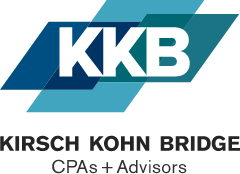Insights
SECURE 2.0: Which provisions went into effect in 2024?
July 3rd, 2024/Tax
The Setting Every Community Up for Retirement Enhancement (SECURE) 2.0 Act was signed into law in December 2022, bringing more than 90 changes to retirement plan and tax laws. Many of its provisions are little known and were intended to be rolled out over several years rather than immediately taking effect.
Here are several important changes that went into effect in 2024:
Pension-Linked Emergency Savings Accounts (PLESAs). More than half of U.S. adults would turn to borrowing when confronted by an emergency expense of $1,000 or more, according to a Bankrate survey — a figure that has held steady for years. In response, SECURE 2.0 contains provisions related to emergency access to retirement savings, including PLESAs. PLESAs are defined contribution plans designed to encourage workers to save for financial emergencies.
Beginning this year, employers can offer PLESAs linked to employees’ retirement accounts, with the PLESA treated as a Roth, or after-tax, account. Non-highly-compensated employees can be automatically enrolled with a deferral of up to 3% of compensation but no more than $2,500 annually (indexed for inflation) — or less if the employer chooses. Employees can make qualified withdrawals tax-free and without penalty. Employers must allow at least one withdrawal per month, with no fee for the first four per year.
Starter 401(k) plans. SECURE 2.0 creates a new kind of retirement plan for employers not already sponsoring a qualified retirement plan, called a starter 401(k). Employers must automatically enroll all employees at a deferral rate of at least 3% of compensation but no more than 15%. The maximum annual deferral is $6,000 (indexed for inflation), plus the annual IRA catch-up contribution of $1,000 for those age 50 or older. No actual deferral percentage (ADP) or top-heavy testing of the plan is required, reducing the compliance and cost burden for employers.
Employers can impose age and service eligibility requirements, and employees may elect out. They also can choose to contribute at a different level. Employer contributions aren’t allowed, so less record keeping is required.
Top-heavy rules. Defined contribution plans that are considered “top-heavy” must make nonelective minimum contributions equal to 3% of a participant’s compensation. This can represent a significant expense for small employers. Top-heavy plans are those where the aggregate of accounts for key employees exceeds 60% of the aggregate accounts for non-key employees.
Starting in 2024, employers can perform the top-heavy test separately on excludable employees (those who are under age 21 and have less than a year of service) and non-excludable employees. The goal is to eliminate the incentive for employers to exclude employees from the plan to avoid the minimum contribution obligation.
SIMPLE IRAs. SECURE 2.0 boosts the annual Savings Incentive Match Plans for Employees (SIMPLE) IRA and SIMPLE 401(k) deferral limit and the catch-up limit to 110% of the 2024 contribution limits (indexed for inflation) for employers with 25 or fewer employees. Employers with 26 to 100 employees can offer the higher deferral limits if they provide a 4% matching contribution or a 3% employer contribution.
Employers now can make additional contributions to each employee in the plan, as well. Additional contributions must be made in a uniform manner and cannot exceed the lesser of up to 10% of compensation or $5,000 (indexed for inflation) per employee.
Early withdrawal exceptions. SECURE 2.0 allows penalty-free early withdrawals from qualified retirement plans for “unforeseeable or immediate financial needs relating to personal or family emergency expenses”. Employees have three years to repay such withdrawals; no additional emergency withdrawals are permitted during the three-year repayment period, except to the extent that any previous withdrawals within that period have been repaid. The withdrawals are otherwise limited to once per year.
Victims of domestic abuse by a spouse or partner also are exempt from early withdrawal penalties for the lesser of $10,000 (indexed for inflation) or 50% of their vested account balances. The law’s detailed definition of domestic abuse includes abuse of a participant’s child or another family member living in the same household. Withdrawals can be repaid over a three-year period, and participants can recover income taxes paid on repaid distributions.
Note: An early withdrawal penalty exception for terminally ill individuals took effect in 2023.
Employer-provided student loan relief. Younger employees with large amounts of student debt have sometimes missed out on their employer’s matching contributions to retirement plans. SECURE 2.0 addresses this by allowing these employees to receive matching contributions based on their qualified student loan payments. Employers can make matching contributions to 401(k) plans or SIMPLE IRAs. Note that contributions based on student loan payments must be made available to all match-eligible employees.
Section 529 plan rollovers. Beginning in 2024, owners of certain 529 plans can transfer unused funds intended for qualified education expenses directly to the plan beneficiary’s Roth IRA without incurring any federal tax or the 10% penalty for nonqualified withdrawals.
A beneficiary’s rollover amount is limited to a lifetime maximum of $35,000, and rollovers are subject to the applicable Roth IRA annual contribution limit. Rollover amounts cannot include contributions made to the plan in the previous five years, and the 529 account must have been maintained for at least 15 years.
Required minimum distributions (RMDs). Designated Roth 401(k) and 403(b) plans provided by employers have been subject to annual RMDs in the same way that traditional 401(k)s are. As of 2024, though, the plans are not subject to RMDs until the death of the owner.
Act now
Many employers need to amend their plans due to changes related to SECURE 2.0. Fortunately, they generally have until the end of 2025 to make these amendments as long as they comply by the law’s deadlines. Contact us for additional details.
© 2024
For more helpful tax and accounting articles, or to sign up for our newsletter, please visit our KKB Insights page. If you have any questions, please contact us.
TAGS: Tax


